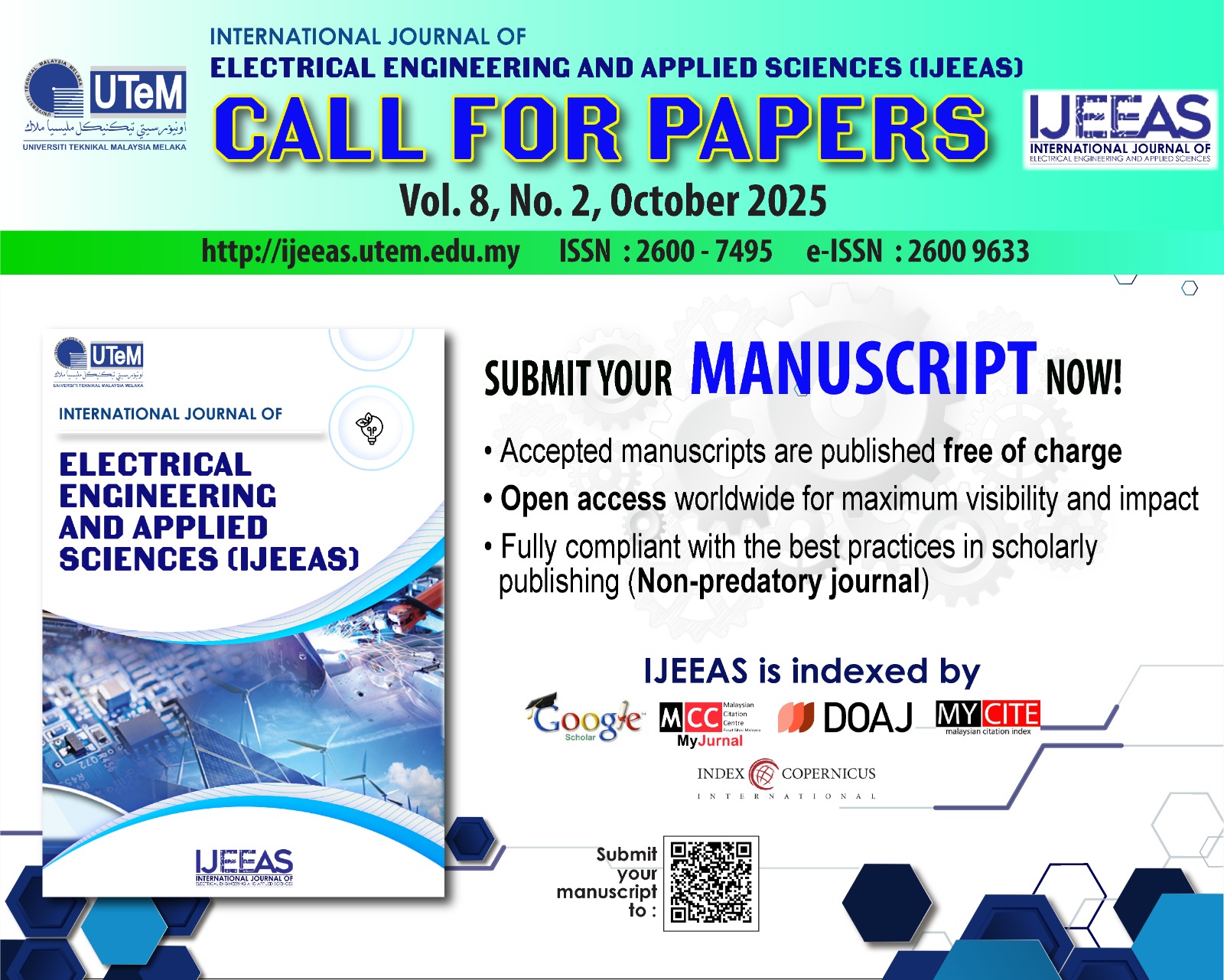Ethernet-Networking Technology: A Surface Review on Current Issues
Keywords:
Ethernet, Ethernet based technologies, Ethernet technologies in automotiveAbstract
Ethernet has evolved throughout the years and still remains relevant in modern communication applications. Its reliability and easy configurability is one of the most liked feature for device communications. Hence, in this paper a surface review upon Ethernet is carried out. Several aspects of Ethernet and its application is investigated on its current researches and achievements. Ethernet applications is used in leading design technologies in the automotive and aviation industry another popular application of it is in the industrial sector. The energy usage of Ethernet and its common issues are also reviewed. From the reviews done, it can be clearly seen that the role of Ethernet in modern network technology is still important as its features are desirable and its flaws consistently being overcome despite the issues of the Ethernet.
Downloads
References
Y.B. Pradeep, “CAN-FD and Ethernet Create Fast Reliable Automotive Data Buses for the Next Decade”, 2013
Lucia Lo Bello, “The case for Ethernet in Automotive Communications”, 2011-2012
Lucia Lo Bello, “Novel trends in Automotive Networks: A perspective on Ethernet and the IEEE Audio Video Bridging”, 2014
Daniel Thiele and Rolf Ernst, “Formal Worst- Case Timing Analysis of Ethernet TSN’s Burst-Limiting Shaper”, Design, Automation & Test in Europe Conference & Exhibition (DATE), 2016
J. A. Cook J. S. Freudenberg, “Controller Area Network (CAN)”, EECS 461, Fall 2008∗,
J.M. Klijn, F. van Rijn, A.J. Striegel and Y.P.H. Oterdoom1, “Development of Ethernet-based Flight Test Instrumentation”, October 2015
Brendon Galloway, Gerhard P.Hancke, “Introduction to Industrial Control Networks”, IEEE Communications Surveys & Tutorials, VOL. 15, NO. 2, Second Quarter 2013
Piotr Gaj, Jurgen Jasperneite, Max Felser, “Computer Communication within Industrial Distributed Environment-a Survey”, IEEE Transactions On Industrial Informatics, VOL. 9, NO. 1, February 2013
Renuka P.Gore, Prof S.A. Mobeen, “Industrial Process Parameter Control Using Ethernet”, 06 Sept 2015
Aboli Kulkarni, James Payne, and Peter Mistretta, “Integrating SCADA, Load Shedding, and High-Speed Controls on an Ethernet Network at a North American Refinery”, IEEE Transactions On Industry Applications, VOL. 51, NO. 2, March/April 2015
Jonas Diemer, Jonas Rox, Rolf Ernst, Feng Chen, Karl-Theo Kremer, Dr. Kai Richter, “Exploring the Worst-Case Timing of Ethernet AVB for Industrial Applications”, 38th Annual Conference on IEEE Industrial Electronics Society, 2012
Karthikeyan P. Saravanan, Paul M. Carpenter, Alex Ramirez, “Power/Performance evaluation of Energy Efficient Ethernet (EEE) for High Performance Computing”, 2013
Miguel Rodríguez-Pérez, Manuel Fernández-Veiga, Sergio Herrería-Alonso, Meriame Hmila, and Cándido López-García “Optimum Traffic Allocation in Bundled Energy-Efficient Ethernet Links”, 2015
Lincong Zhang, Yejun Liu, Lei Guo, Xiaoxue Gong, “Energy-saving scheme based on downstream packet scheduling in Ethernet passive optical networks”, 29 January 2013
D. Larrabeiti, P. Reviriego, J.A. Hernándeza, J.A. Maestro, and M. Urueña “Towards an energy efficient 10 Gb/s optical ethernet: Performance analysis and viability” 29 March 2011
Hyosup Won, Taehun Yoon, Jinho Han, Joon-Yeong Lee, Jong-Hyeok Yoon,Taeho Kim, Jeong-Sup Lee, Sangeun Lee, Kwangseok Han, Jinhee Lee, Jinho Park, Hyeon-Min Bae, “A 0.87 W Transceiver IC for 100 Gigabit Ethernet in 40 nm CMOS”, 2014
Jianbiao Mao, Biao Han, Gaofeng Lv, Zhigang Sun, Xicheng Lu, “FRINGE: Improving the Scalability of Ethernet DCN via Efficient Software-Defined Edge Control”, IEEE 23rd International Symposium on Quality of Service (IWQoS), 2015
Nazrul Islam, Chayan Chandra Bawn, Jahid Hasan, Asma Islam Swapna, Md. Syfur Rahman, “Quality of Service Analysis of Ethernet Network Based on Packet Size”
Saad A. NSAIF, Jong M RHEE, “Seamless Ethernet Approach”, IEEE International Conference on Consumer Electronics (ICCE), Journal of Computer and Communications, 2016
Wanchun Jiang, Fengyuan Ren, Ran Shu, Yongwei Wu, and Chuang Lin, “Sliding Mode Congestion Control for Data Center Ethernet Networks”, IEEE Transactions On Computers, Vol. 64, No. 9, September 2015.
Timo Kiravuo, Mikko Sarela, Jukka Manner, “A Survey of Ethernet LAN Security”, IEEE Communications Surveys & Tutorials, Vol. 15, No. 3, Third Quarter 2013
Dong Zhou, Bin Fan, Hyeontaek Lim, Michael Kaminsky†, David G. Andersen, Scalable, High Performance Ethernet Forwarding with Cuckooswitch, 2013.
Jean-Luc Scharbarg, Marc Boyer, CAN- Ethernet Architectures for Real-Time Applications, 2005 IEEE
Mohamad Khairi Ishak, Guido Herrmann, Martin Pearson, Reducing delay and jitter for real-time control communication in Ethernet, March 2013
Haiya Xu, Yan Gao, Kemin Liu, Bo Zhu, Chao Zhang, “Research on Cross-Communication Based on Real-time Ethernet POWERLINK”, 26th Chinese Control and Decision Conference (CCDC), 2014.
Zere Ghebretensaé, Ericsson Sweden, Janos Harmatos, Ericsson Hungary, Kåre Gustafsson, Ericsson Sweden, Mobile Broadband Backhaul Network Migration from TDM to Carrier Ethernet, IEEE Communications Magazine, October 2010.
Downloads
Published
How to Cite
Issue
Section
License
Authors who publish with this journal agree to the following terms:
- Authors retain copyright and grant the journal right of first publication with the work simultaneously licensed under a Creative Commons Attribution License that allows others to share the work with an acknowledgement of the work's authorship and initial publication in this journal.
- Authors are able to enter into separate, additional contractual arrangements for the non-exclusive distribution of the journal's published version of the work (e.g., post it to an institutional repository or publish it in a book), with an acknowledgement of its initial publication in this journal.
- Authors are permitted and encouraged to post their work online (e.g., in institutional repositories or on their website) prior to and during the submission process, as it can lead to productive exchanges, as well as earlier and greater citation of published work (See The Effect of Open Access).







